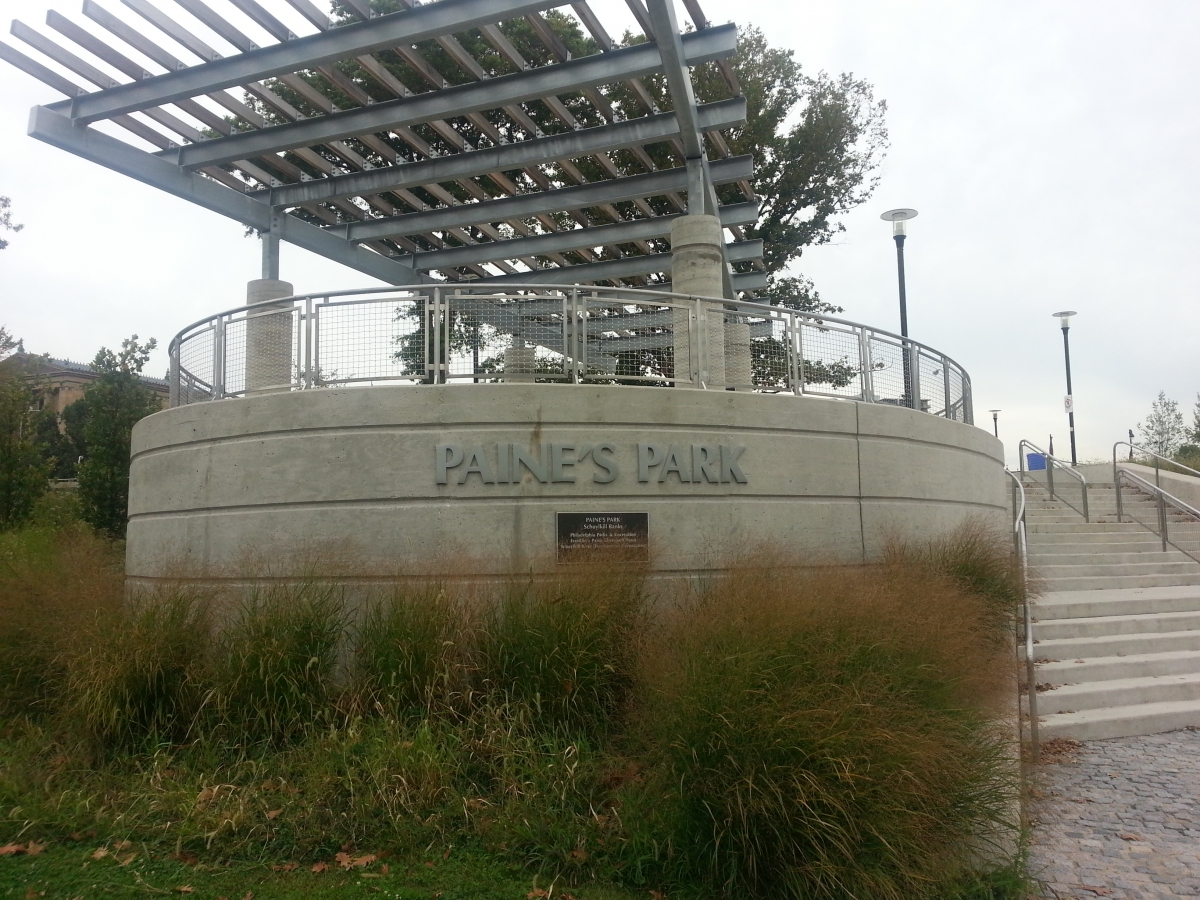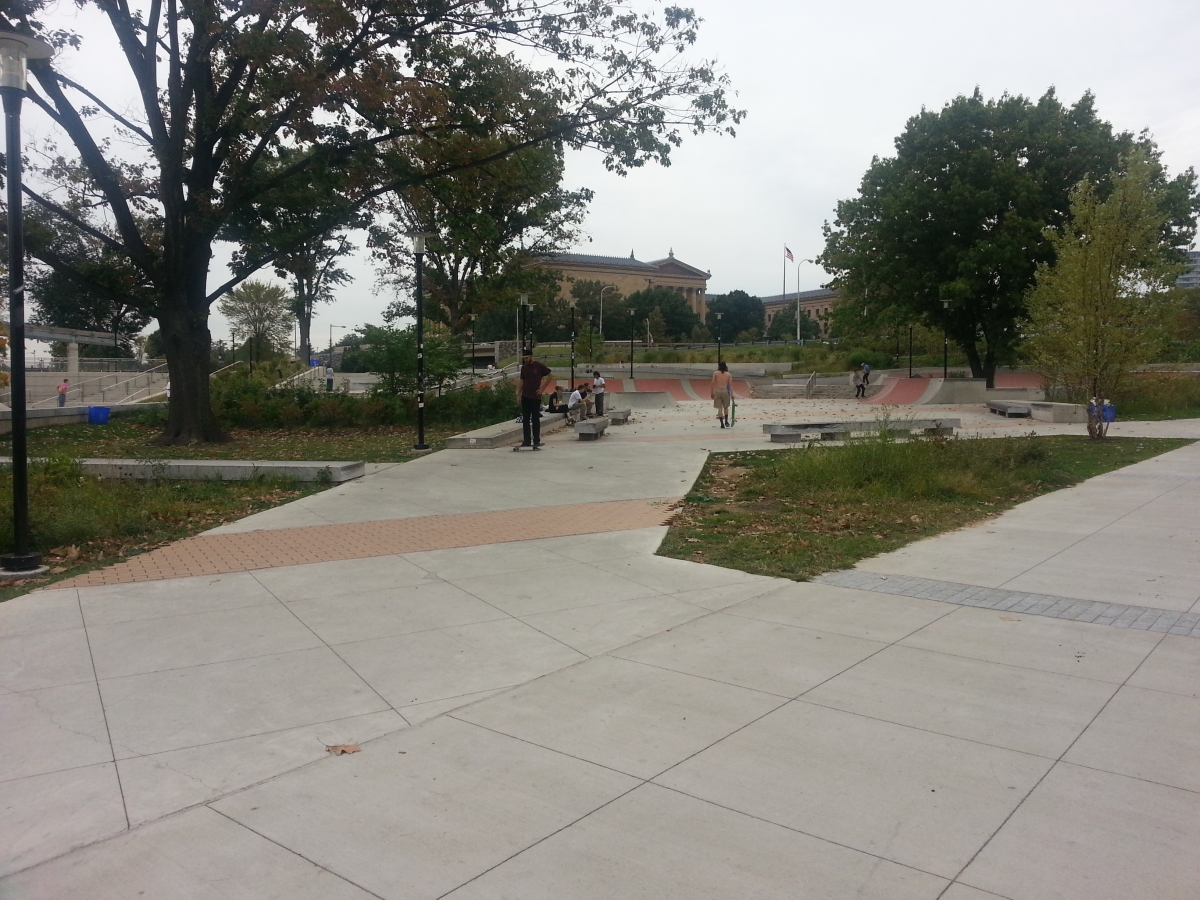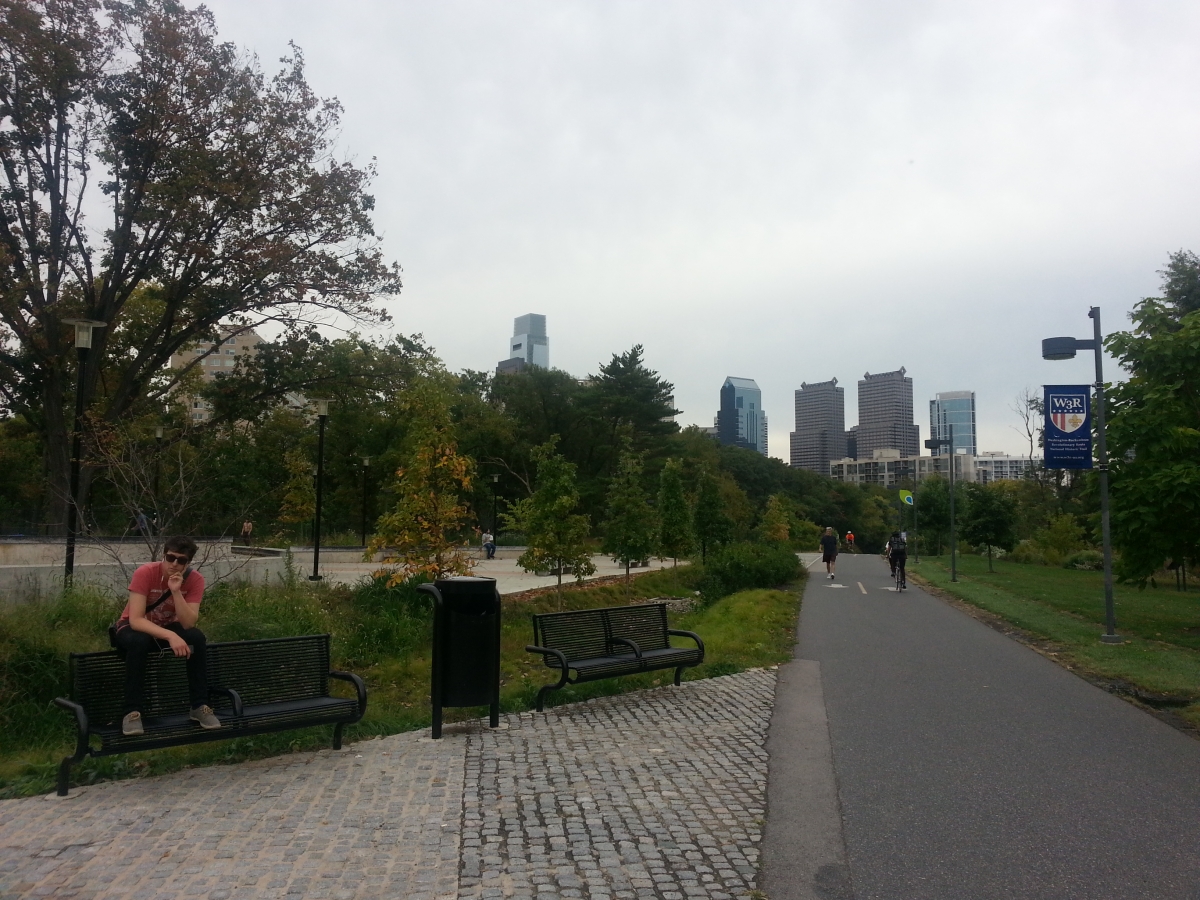Related Post:
- Buy Tickets for The Constitutional Walking Tour of Philadelphia - See 20+ Sites on a Primary Overview of Independence Park, including the Liberty Bell and Independence Hall
- Schuylkill River Trail and Schuylkill Banks
A skate park for everyone.
The History
The history of Paine’s Park cannot be told without mentioning another famous Philadelphia public space, JFK Plaza or “LOVE Park.” LOVE Park was designed by renowned city planner Edmund Bacon (and father of actor Kevin Bacon) and architect Vincent G. Kling in 1969. It gained its moniker "LOVE Park" after a “Love” sculpture by Robert Indiana was placed in the park during the United States Bicentennial celebration in 1976. The park is the terminus of the Benjamin Franklin Parkway, Philadelphia’s grand boulevard of cultural institutions and the “Love” sculpture and large fountain behind it have become one of the most iconic photo opportunities in Philadelphia for tourists.

For a certain subset of Philadelphians, LOVE Park wasn’t notable for its fountains and sculptures, but for the large curved granite steps located throughout the park. These steps, and indeed the entire layout of the park, proved to have been perfectly set up as a skate park for skateboarders in Philadelphia. LOVE Park became internationally known as one of the premier places to skateboard in the country and its popularity was a big reason why the 2001 and 2002 X Games were held in Philadelphia. The only issue was that LOVE Park was never actually meant to be a skate park, and as Center City Philadelphia’s population grew exponentially in the 1990s and 2000s, there were suddenly a lot of people looking for space in Love Park. Deciding that skateboarding in the crowded LOVE Park was simply too dangerous, a ban on skateboarding in the park was enacted in 2002.
Denied access to LOVE park, organizers immediately began efforts to create a park in Center City Philadelphia that would not only welcome skateboarders, but be designed with them in mind. Even back when Paine’s Park was only an idea, its name had already been decided. Paine’s Park pays tribute to famous Philadelphian Thomas Paine. Paine was the free thinker who rallied colonists against the British in the Revolutionary War with his incendiary pamphlet “Common Sense” and a lifelong champion of the ideals of the enlightenment.
The city donated a plot of land in Fairmount Park in 2003 for the creation of the park but it left the funding of the actual park up to the skaters themselves. Cobbling together that funding took ten long years and used every imaginable source, including government grants, famous skater Tony Hawk, and even several successful crowd funding campaigns. Their efforts paid off and in 2013 Paine’s Park became a reality.
What to See
Paine’s Park is one of the very first skate parks in the country that was designed by an architect, and that fact is immediately apparent from the amazing quality of the park and its design. Architect Anthony Bracali designed the park to not only be a great skate park, but to look great as well. High quality cement and granite are the primary materials of Paine’s Park, each providing a perfect surface for skating.

The park contains a number of skate park features including transition walls, flat banks, and numerous benches and ledges for skaters to slide along and flip off of. But Paine’s Park was designed not only with skaters in mind, but everyone! The designers of Paine’s Park set out to prove that skaters and other park goers could all coexist in one public space. Despite being kicked out of LOVE Park in favor of the other groups that used the park, once they got the opportunity to create their own public space they made sure that everyone would feel at home.
Intertwined within the features of the skate park are features designed for spectators and even just people walking by on the Schuylkill River Trail. There are numerous viewing platforms where spectators can gather and watch. An amphitheater with a stage creates the possibility for concerts and other events to take place within the park. Perhaps most importantly, two public walkways travel through the park from the Benjamin Franklin Parkway down to the Schuylkill River Trail, creating a new and important connection between two of Philadelphia’s great destinations. Also, unlike most skate parks which are mostly just large masses of concrete, Paine’s Park has significant areas of green space and four large white oaks were preserved during the construction process and built into the design of the park. The shady oaks and green space make Paine’s Park one of the few places where performing a kickflip or enjoying a picnic would both be appropriate.
Keep in mind that the viewing platforms at Paine’s Park are good for more than just looking at the skateboarders below. Tilt your view upwards and you can see some of the greatest views of Philadelphia. Paine’s Park is surrounded by magnificent scenery; the Center City Skyline rises to the Southeast, to the North are amazing views of the Philadelphia Museum of Art, to the West the Schuylkill River flows by and to the Southwest you can see the emerging skyline of University City in West Philadelphia and the campuses of the University of Pennsylvania and Drexel University.

Insider Tips
In many ways, Paine’s Park is more than just a spiritual successor to LOVE Park, many efforts were made to incorporate many of the things that made LOVE Park so great into Paine’s Park. To start with, most of the granite used in the construction of Paine’s Park was salvaged from Dilworth Plaza, taken from the Plaza when the city redesigned the public space into Dilworth Park. Dilworth Plaza was located right across the street from LOVE Park and the granite slabs were installed at the same time as those in LOVE Park and came from the same quarry. Because of this, the granite at Paine’s Park is indistinguishable from the beloved granite that made LOVE Park a skating destination, not to mention the fact that Dilworth Plaza itself was a skateboarding hotspot before skateboarding was banned there as well.
The designers of Paine’s Park also made sure the dimensions of the granite levels that make up the amphitheater exactly mimic the dimensions of the granite steps located in LOVE Park. Paine’s Park doesn’t just pay tribute to LOVE Park; it takes everything that made LOVE Park what it is and improves upon it to create a space that everyone can enjoy.
How to Get There
Located right off the Schuylkill River Trail, Paine’s Park is easily accessible by foot. Guests of The Constitutional Walking Tour can start from the National Constitution Center where all of our tours begin and end, and begin by walking just one block south to Market St. After making a right on Market St, simply continue on Market St all the way to the entrance of the Schuylkill River Trail just past 23rd St. Make a right when you reach the trail and the Paine’s Skate Park is a short walk ahead.
Those who are looking to drive can take advantage of parking for the museums on the Benjamin Franklin Parkway and then walk the short distance to Paine’s Park. The entrance to Paine’s Park on the Benjamin Franklin Parkway is located just past 24th Street as you walk toward the Philadelphia Museum of Art. Getting to Paine’s Park is also pretty painless if you’re taking public transit. The park is a short walk from the 30th Street Station, a major transportation hub in Philadelphia servicing multiple subway lines, regional rail and even Amtrak for out of towners.
Hours
Daily – 6:00am – 10:00pm
Additional Information
129 S. 30th Street, Unit B,
Philadelphia, PA 19104
215.222.4300



